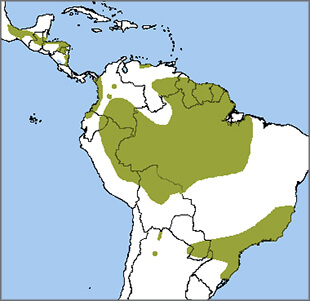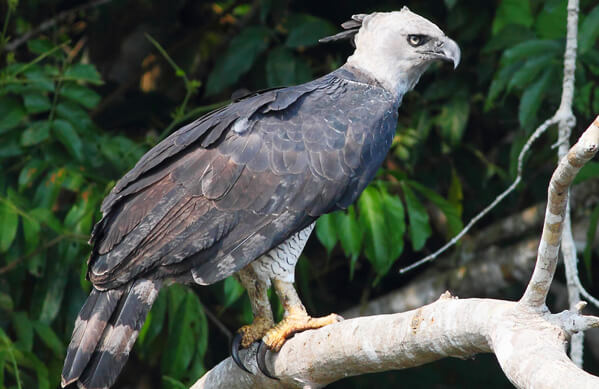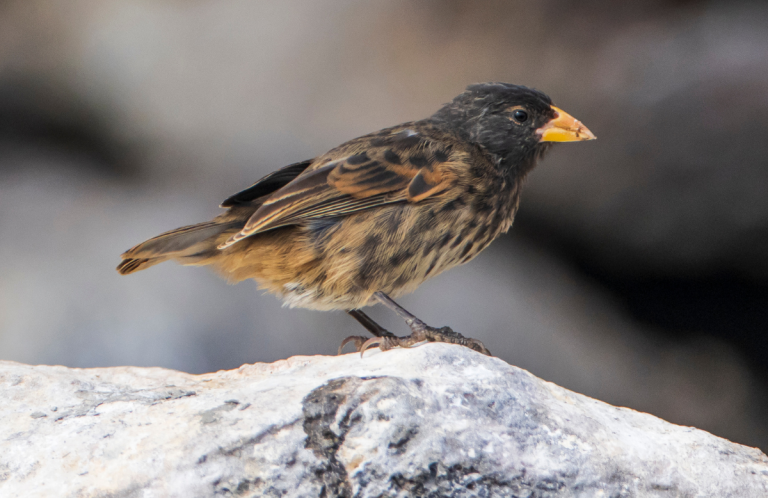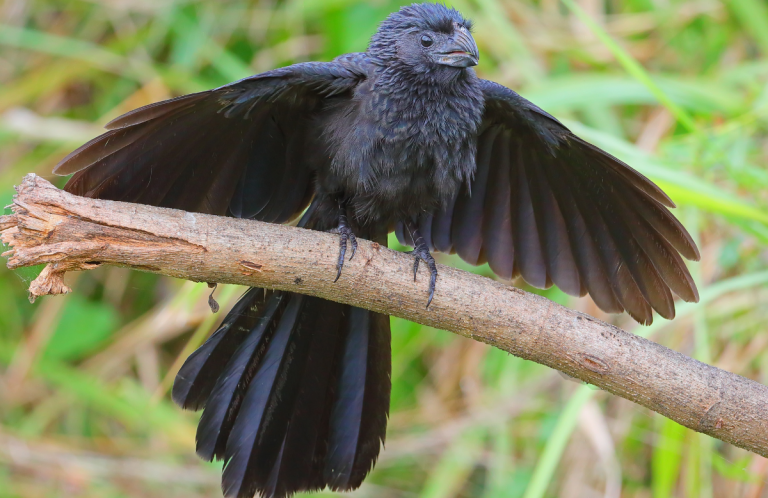 The Harpy Eagle is the largest, most powerful raptor in the Americas, bigger even than the Golden Eagle. Its name refers to the harpies of Greek mythology, monsters in the form of a bird with a human face. The species inspired the design of Fawkes the Phoenix in the Harry Potter series and is the national bird of Panama.
The Harpy Eagle is the largest, most powerful raptor in the Americas, bigger even than the Golden Eagle. Its name refers to the harpies of Greek mythology, monsters in the form of a bird with a human face. The species inspired the design of Fawkes the Phoenix in the Harry Potter series and is the national bird of Panama.
Not Afraid — and At Risk
Habitat loss and shooting are the two chief threats to the Harpy Eagle's survival. The birds were once found from southern Mexico through Central and South America, but sadly, they have been extirpated from many areas where they once occurred.
“I have spoken with hunters who have killed Harpy Eagles out of curiosity,” commented Bennett Hennessey, who directs ABC's Brazil Conservation Program. “Unlike many other large raptors, Harpy Eagles will sit on a perch and allow people to approach them. Unfortunately, they are not afraid of humans, so are easy to kill.”
Sign up for ABC's eNews to learn how you can help protect birds
Harpy Eagle at the Apex
These powerful eagles are at the top of the rainforest food chain and have no natural predators. They prey on tree-dwelling mammals including sloths, monkeys, and opossums; large birds such as macaws and curassows; and reptiles like iguanas and snakes.
Truly impressive birds, Harpy Eagles' legs are as thick as a person's arm and their talons are three to four inches long — the same size as a grizzly bear's claws!
This eagle is one of the few diurnal (day-hunting) raptors that have a facial disc, a trait they share with owls such as the Crested Owl. This feathered, concave area directs sound to the eagle's ears, a useful feature as they hunt under the dim rainforest canopy. With proportionately short wings and long tails, the Harpy Eagles can fly between trees and branches with amazing agility in pursuit of their prey.
These eagles occupy huge territories that can exceed 10,000 acres. Pairs build a stick nest — six feet wide and more than a foot deep — high in the jungle canopy. The birds mate for life and reproduce slowly, raising a chick every two to four years. Young Harpy Eagles reach sexual maturity between ages four and five years.

Harpy Eagle by Alfredo Maiquez, Shutterstock
Big Eagles Need Big Trees
Large areas of land with big, healthy trees are needed to conserve viable populations of Harpy Eagles. ABC supports several reserves that provide habitat for this eagle. For example, Harpy Eagles have been spotted at Brazil's Serra Bonita Reserve, which shelters endangered birds such as the Bahia Tyrannulet, Pink-legged Graveteiro, and Plumbeous Antvireo.
Harpy Eagles were recently documented at Ecuador's Narupa Reserve, also supported by ABC. The reserve harbors populations of Military Macaw and migratory birds such as Cerulean and Canada Warbler and Olive-sided Flycatcher.
In addition, in collaboration with Rainforest Expeditions, we supported Harpy Eagle conservation in the Infierno native community and adjacent Tambopata National Reserve in Peru during 2003-2006. This project helped Brazil nut collectors learn ways to minimize disturbance to Harpy Eagle nests, which are frequently built in Brazil nut trees.
Donate to support ABC's conservation mission!



















































